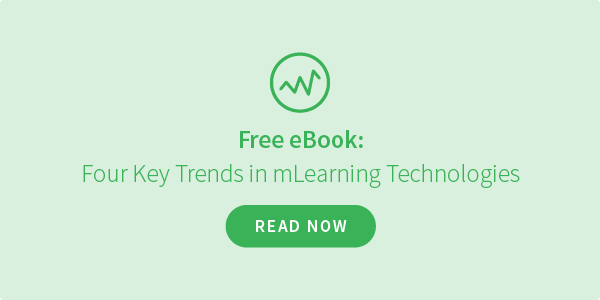Leaders in mLearning Series: Q&A with Amy Hazen, Associate Director of Wharton

The Wharton School of The University of Pennsylvania partnered with Inkling in 2012, shortly after launching their iPad program for MBA for Executives program, and uses the platform to house and distribute much of its eLearning content.

Amy Hazen is Associate Director, Program Management, for the Wharton MBA for Executives Program in San Francisco, a post she has held since 2007. She was part of Wharton’s initial iPad deployment program and is an advocate for the advancement of education and its coupling with technology. Born and raised on the East Coast, Amy is now a proud Californian where she currently lives with her husband (the couple was married in April).
Why did Wharton decide to prioritize mobile learning?
Our MBA for Executives students are extremely mobile. They all work full-time and attend our program on alternating Fridays and Saturdays, with about 50% flying in from locations outside of the Bay Area. They’re busy managing their careers, their families, and our rigorous curriculum, so they’re constantly on the go. Focusing our mobile learning strategy on this group was a logical fit.
Additionally, we were impressed with the Inkling product and the potential through eLearning for a more rich and interactive experience for students, as compared to the traditional hard copy textbook. We tested several other platforms before discovering Inkling and have been working with them ever since.
Which devices does Wharton enable their students to use, and which sees the most use?
When our MBA for Executives students begin our Wharton program, they receive a new iPad as part of their course materials. The purpose of providing the iPads is to enable the delivery of course materials via a convenient and environmentally friendly platform. In addition to these iPads, students also rely on the use of personal laptops, personal tablets and mobile phones.
In a recent survey, 72% of respondents reported using their Wharton-issued iPads at least once a week to read course materials. Similarly, 69% reported using their personal laptops to perform the same tasks. For use in the classroom, 47% reported regular use of their laptop while only 41% reported using their iPads. We see this as an opportunity for growth and innovation, and continue to explore new ideas for encouraging increased use of technology in the classroom.
How have mobile interactive learning materials made the difference in Wharton students’ education?
The main benefit for our students is increased accessibility by integrating mobile devices into their education experience. For our Executive MBA population, with all of the balls that they have in the air at any given time, the additional convenience can go a long way.
In the future, we also hope to raise the level of student and faculty engagement in the classroom by fostering a deeper connection through technology in-between class sessions. We’re proud to be at the forefront of this new wave of learning and technology integration, but we recognize that there is still much more to be done.
Based off of your own experience, what key features do you think mobile learning solutions should have in order to be successful?
Our business students are always interested in what’s happening now, so it’s important for the mobile learning solutions that we embrace to be on the cutting edge. As we look ahead to what’s next, one key feature that we’re focusing additional efforts on is content integration.
While we hunt for that one-stop-shop platform that has the capability to host all of our eLearning needs (books, cases, and course materials intranet), we’re making small steps toward reducing the number of different sites and the volume of materials for which our students must search. This, too, is a work in progress.

